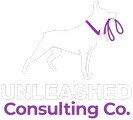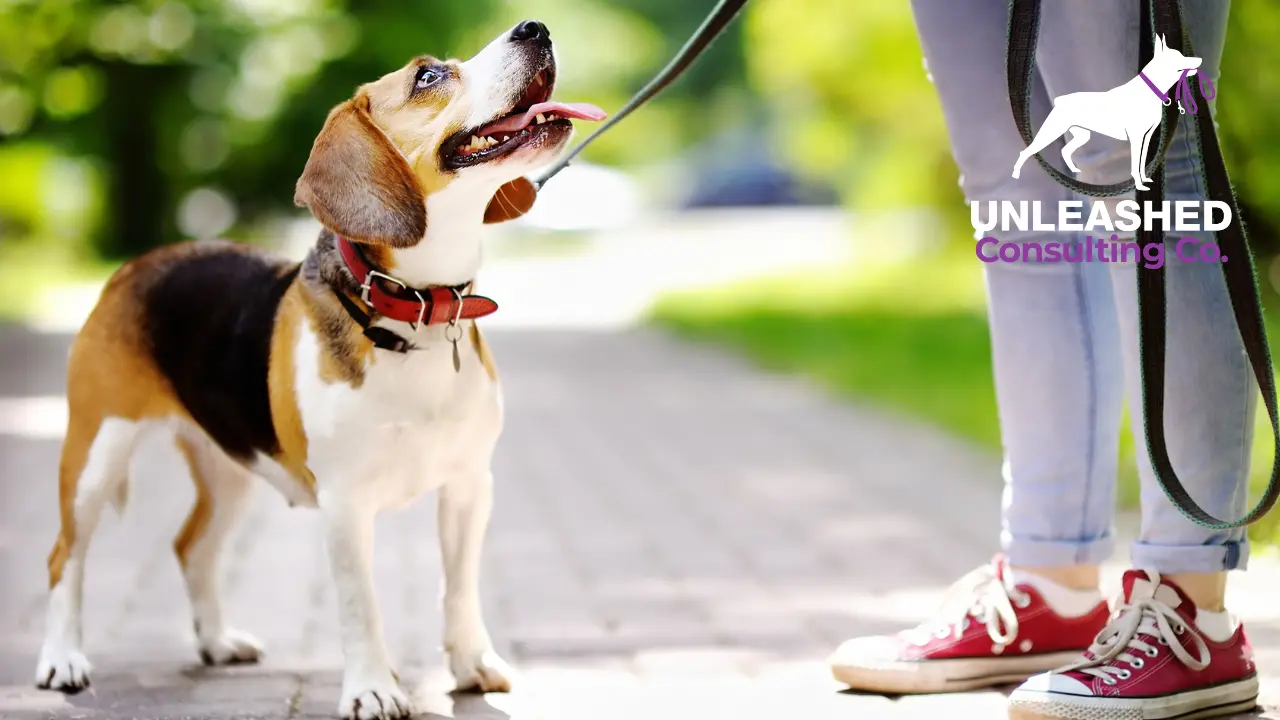How can you effectively market your dog training academy to stand out in a competitive industry?
With so many dog trainers and academies out there, it can be challenging to make your business shine. But with the right marketing strategies, you can attract more clients, build a strong brand, and position your academy as the go-to choice for dog owners.
In this blog, we’ll explore proven marketing strategies for a top dog training academy that can help you get noticed, from creating a unique brand identity to using digital marketing tools.
Whether you’re just starting or looking to grow your established academy, these pet marketing tips will guide you in making your dog training business a success.
10 Tips for an Effective Marketing for a Top Dog Training Academy
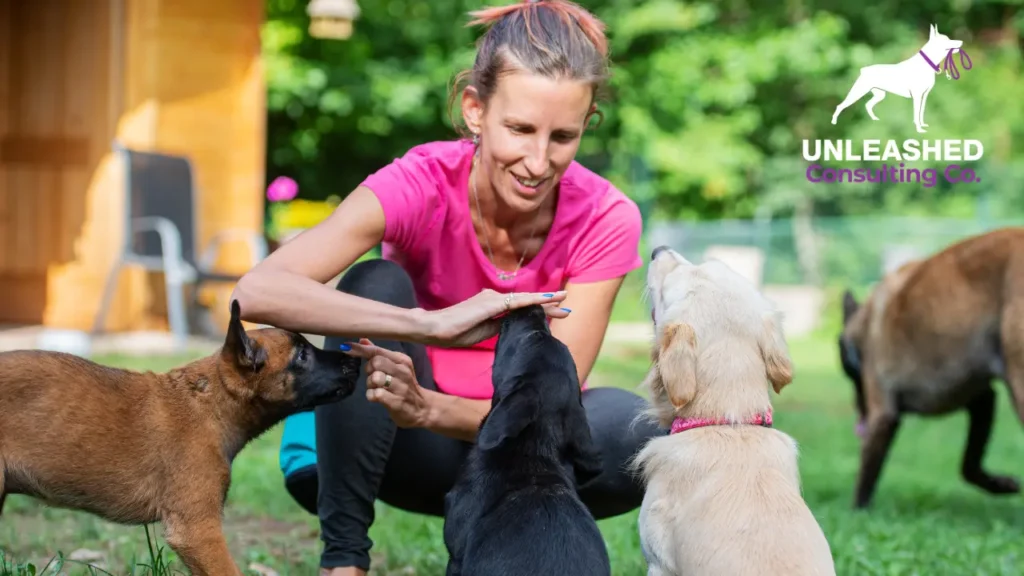
These 10 simple yet powerful dog training marketing tips that can help you attract more clients, build a strong brand, and stand out in the competitive world of dog training.
1. Building a Strong Brand for a Top Dog Training Academy
a. Importance of Branding
Branding is like the face of your dog training academy. It’s what makes you stand out and helps people recognize and remember your business. A strong brand builds trust and shows that you’re professional and reliable. When dog owners see your brand, they should instantly feel confident that they’re choosing the best place for their pets.
b. Creating a Unique Value Proposition
Your unique value proposition (UVP) is what makes your dog training academy special. It’s a simple statement that explains why someone should choose your services over others.
Think about what makes your training different—maybe you have special techniques, work with specific breeds, or have a high success rate. Highlight these points to show why your academy is the best option for dog owners.
c. Consistent Messaging Across Platforms
Once you’ve defined your brand and unique value proposition (UVP), it’s important to keep your message the same everywhere. Whether it’s on your website, social media, or in your ads, the tone, style, and key points should all match. Consistent messaging helps people quickly recognize your academy, building familiarity and trust. So, whenever someone sees your brand, they get the same clear, strong message about what you offer.
2. Identifying and Reaching Your Target Audience
a. Defining Your Ideal Clients
To effectively market your dog training academy, you first need to understand who your ideal clients are. These are the people who are most likely to use your services and benefit from them. Think about factors like the age of their dogs, their location, and their specific needs.
For example, are you targeting busy professionals with young puppies or families with older dogs? Knowing who your ideal clients are will help you tailor your marketing efforts to attract them.
b. Understanding Customer Pain Points
Customer pain points are the problems or challenges that your potential clients are facing. For dog training, this might include issues like dealing with a dog’s behavioral problems, finding the right training methods, or wanting to improve their dog’s obedience.
By understanding these pain points, you can show how your academy addresses and solves these issues. This makes your marketing more relevant and appealing to those who need your help.
c. Dog Training Marketing Strategies that Your Target Audience Needs
Once you know who your ideal clients are and what problems they face, you can tailor your marketing strategies to meet their needs. This means creating messages and offers that directly address their concerns and show how your services can help.
For example, if your target audience is new dog owners struggling with training, you might create content that offers tips for beginners or highlight success stories from other new dog owners. Tailoring your approach ensures that your marketing resonates with your audience and encourages them to choose your academy.
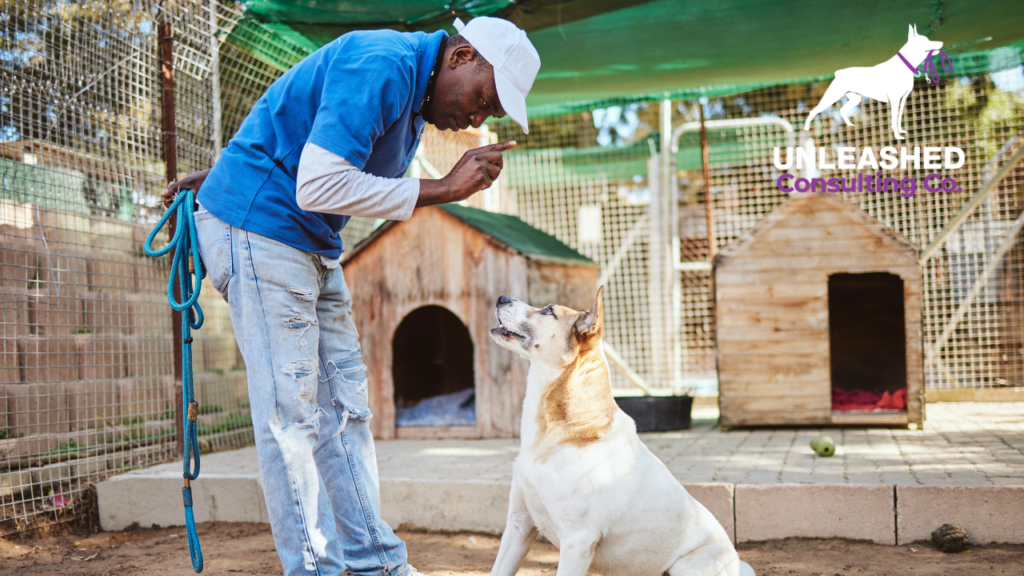
3. Enhancing Online Visibility with SEO
a. On-Page SEO Techniques for Dog Training Websites
On-page SEO involves making changes directly on your website to help it rank higher in search engines.
For a dog training academy, this includes things like optimizing your website’s content with relevant keywords, making sure your site is easy to navigate, and using descriptive titles and headings. For example, if you offer puppy training classes, include terms like “puppy training” and “dog obedience classes” in your page titles, headings, and throughout your content.
This helps search engines understand what your website is about and makes it more likely to show up when people search for those terms.
b. Using Local SEO to Attract Nearby Clients
Local SEO focuses on attracting clients who are in your area. This is crucial for a dog training academy because most people prefer services close to them.
To improve local SEO, include your location in key places on your website, like your contact page and homepage. Create and optimize a Google My Business listing with your address, phone number, and business hours.
Encourage satisfied clients to leave reviews on Google and other local directories. This helps your academy show up in local search results, making it easier for nearby dog owners to find and choose your services.
c. Importance of Keyword Research
Keyword research is the process of finding out what words and phrases people are using when they search for dog training services online. These keywords are what you should include in your website content to help attract the right visitors.
For example, if many people are searching for “best dog trainers near me” or “puppy training classes in [Your City],” you should use these phrases in your website’s content, titles, and meta descriptions. Effective keyword research helps you understand what potential clients are looking for and ensures that your website appears in relevant search results.
4. Social Media Marketing for a a Top Dog Training Academy
a. Best Social Media Platforms for Dog Training Academies
When it comes to social media, not all platforms are equally effective for a dog training academy. The best platforms for your business are typically those where pet owners and dog lovers spend their time. Facebook and Instagram are great for sharing photos and videos of training sessions, client testimonials, and dog care tips. TikTok is also popular for short, engaging videos that can show off your training methods or funny moments with dogs. Choosing the right platforms helps you connect with your target audience where they are most active.
b. Content Ideas for Social Media (Tips, Videos, Client Success Stories)
Creating engaging content is key to building a following on social media. Here are some ideas to get you started:
- Training Tips: Share helpful tips and advice for dog owners, like how to correct common behavioral issues or teach basic commands.
- Videos: Post videos of your training sessions, before-and-after transformations, or demonstrations of specific techniques.
- Client Success Stories: Feature stories from satisfied clients and their well-trained dogs. Share their experiences and how your academy helped them.
- Behind-the-Scenes: Give a glimpse of daily life at your academy, introduce your trainers, and showcase your training environment.
- Dog Care: Offer tips on general dog care, health, and nutrition to provide additional value to your followers.
c. Running Paid Social Media Campaigns
Paid social media campaigns can help you reach a larger audience and attract new clients. You can create targeted ads that show up in the feeds of people who match your ideal client profile. For example, you might target dog owners in your local area or those who have recently adopted a puppy.
These ads can promote special offers, upcoming classes, or your unique training programs. Be sure to monitor the performance of your campaigns and adjust them based on what works best, like which ads get the most clicks or generate the most inquiries.

5. Creating High Quality Content for a Top Dog Training Academy
a. Content Marketing Strategies (Blogs, Guides, Tutorials)
Creating valuable content is a great way to attract and engage potential clients. For a dog training academy, this means sharing information that helps dog owners and showcases your expertise. Start by writing blogs about common dog training issues, training tips, or success stories.
Guides can provide in-depth information on specific topics, like housebreaking a puppy or advanced obedience techniques. Tutorials are step-by-step instructions that teach dog owners how to handle particular behaviors or train their dogs in new skills. By offering this kind of content, you not only help your audience but also build credibility and trust in your academy.
b. The Role of Video Marketing in Dog Training
Videos are incredibly effective for showcasing dog training methods and connecting with your audience. They allow potential clients to see your training techniques in action and understand how you work with dogs.
You can create videos demonstrating basic commands, solving common behavior problems, or highlighting success stories of dogs you’ve trained. Video marketing can also include live sessions where you answer training questions or offer free mini-lessons. These videos make your training methods more relatable and engaging, and they help potential clients get a better sense of what your academy offers.
c. Using Customer Testimonials and Case Studies
Customer testimonials and case studies are powerful tools for building trust and credibility. Testimonials are short quotes or reviews from satisfied clients who share their positive experiences with your academy.
You can post these on your website, social media, or in marketing materials. Case studies provide more detailed stories about how your academy helped specific clients achieve their training goals. They often include before-and-after scenarios and detailed descriptions of the training process. Both testimonials and case studies offer real-life proof of your effectiveness and help potential clients see the value of your services.
6. Driving Traffic with Paid Advertising
a. Setting Up Effective PPC Campaigns
Pay-Per-Click (PPC) campaigns are a great way to drive traffic to your dog training academy’s website. In a PPC campaign, you create ads that appear on search engines or other websites, and you only pay when someone clicks on your ad.
To set up an effective PPC campaign, start by choosing relevant keywords that potential clients might use to find dog training services, like “dog obedience classes” or “puppy training near me.” Create clear, compelling ad copy that highlights what makes your academy special. Make sure your ads lead to a well-designed landing page that encourages visitors to take action, such as signing up for a free consultation or booking a class.
b. Using Google Ads to Target Local Pet Owners
Google Ads is a powerful tool for reaching local pet owners. With Google Ads, you can create ads that appear in search results when people in your area search for dog training services. To target local clients, include your city or region in your keywords, like “dog training in [Your City].”
You can also use location targeting settings in Google Ads to ensure your ads are shown to people who are geographically close to your academy. This helps you attract clients who are looking for nearby dog training options and increases the likelihood of converting them into customers.
c. Tracking and Optimizing Ad Performance
Once your PPC campaigns are running, it’s important to track how well they are performing and make improvements as needed. Use analytics tools to monitor key metrics like the number of clicks, the cost per click, and the conversion rate (how many people take the desired action, such as filling out a contact form).
Regularly review these metrics to see which ads are working well and which ones may need adjustments. For example, if certain keywords are driving more traffic and conversions, you might want to increase your budget for those keywords. By continuously tracking and optimizing your ad performance, you can improve your return on investment and get the best results from your paid advertising efforts.
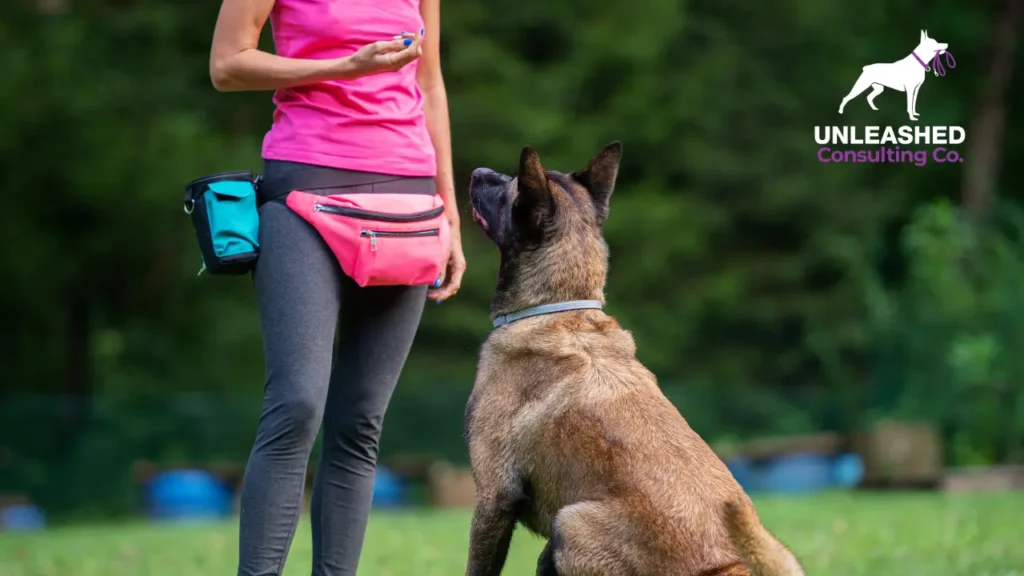
7. Boosting Credibility with Online Reviews in a Dog Training Academy
a. Encouraging Satisfied Clients to Leave Reviews
Online reviews can greatly enhance your dog training academy’s credibility. Positive reviews from happy clients can attract new customers and build trust in your services. To encourage satisfied clients to leave reviews, simply ask them after a successful training session or when they share their positive feedback.
Make it easy for them by providing direct links to review sites like Google, Yelp, or Facebook. You might also consider sending a follow-up email thanking them for their business and kindly requesting a review. Offering a small incentive, like a discount on their next session, can also motivate clients to share their experiences.
b. Managing and Responding to Reviews
Once you start receiving reviews, it’s important to actively manage and respond to them. Regularly check review sites and social media platforms for new feedback. When you receive positive reviews, respond with a thank-you message to show your appreciation and reinforce positive relationships. If you encounter negative reviews, address them professionally and promptly.
Acknowledge any issues, apologize if necessary, and offer to resolve the problem. This not only helps to mitigate any negative impact but also demonstrates your commitment to customer satisfaction and improves your reputation.
c. Impact of Online Reviews on Local SEO
Online reviews play a significant role in local SEO (Search Engine Optimization). Search engines like Google use reviews as a factor in ranking local businesses. The more positive reviews you have, and the more frequently people leave them, the better your chances of appearing in local search results.
Good reviews can boost your visibility in search engine listings, making it easier for potential clients in your area to find your dog training academy. By encouraging reviews and actively managing them, you enhance your academy’s online presence and improve your chances of attracting new clients.
8. Implementing a Referral Program as a Top Dog Training Academy
a. Benefits of Client Referral Programs
A client referral program is a powerful way to grow your dog training academy by encouraging your current clients to bring in new customers. When existing clients refer friends, family, or colleagues to your academy, it not only helps you gain new clients but also builds trust. People are more likely to choose your services if they hear positive recommendations from someone they know.
Referral programs can also lead to higher client satisfaction because people who come in through referrals often already have a favorable impression of your academy. Plus, referrals are generally a cost-effective way to acquire new clients compared to traditional advertising.
b. How to Create an Effective Referral Incentive
To make your referral program work, you need to offer something valuable to both the referrer (the person making the referral) and the new client. An effective referral incentive could be a discount on future services, a free training session, or a gift card.
For example, you might offer a 20% discount on their next session for clients who refer a friend, and also provide a discount or a free session to the new client as a welcome gift. Ensure that the incentive is appealing enough to motivate your clients to participate, but also feasible for your business.
c. Promoting Your Referral Program
Once your referral program is set up, let your clients know about it. Promote your program through various channels like your website, social media, and email newsletters. You can create eye-catching flyers or banners in your training facility to remind clients of the referral program. Also, make sure to mention it during client interactions and in follow-up communications. The more visible and accessible your program is, the more likely clients will be to participate. Consider creating special campaigns or events around the referral program to generate additional interest and excitement.
9. Email Marketing Strategies for a Top Dog Training Academy
a. Building an Email List of Interested Pet Owners
The first step in email marketing is to build a list of people who are interested in your dog training services. Start by collecting email addresses from your current clients, website visitors, and social media followers.
You can encourage people to sign up by offering something valuable in return, like a free guide on dog training tips or a discount on their first session. Make sure to have an easy-to-find sign-up form on your website and share it in your social media posts. The more interested people you have on your list, the more effective your email campaigns will be.
b. Creating Engaging Email Campaigns
Once you have a list of email subscribers, you need to create engaging content that keeps them interested and encourages them to take action. Your email campaigns could include:
- Training Tips: Share helpful advice and tips on various dog training topics.
- Special Offers: Promote discounts, new classes, or special events at your academy.
- Success Stories: Highlight client testimonials and success stories to build trust and showcase your expertise.
- Updates: Keep subscribers informed about any new services or changes in your academy. Make sure your emails are visually appealing, easy to read, and include clear calls to action, such as booking a session or visiting your website.
c. Using Automation for Lead Nurturing
Email automation allows you to send timely and relevant messages to your subscribers without having to do it manually each time. With automation, you can set up email sequences that are triggered by specific actions or events.
For example, when someone signs up for your email list, they might automatically receive a series of welcome emails introducing them to your academy and offering useful tips. You can also set up automated follow-up emails to nurture leads who have shown interest but haven’t yet booked a session. Automation helps you stay engaged with potential clients, keeps them informed, and encourages them to take the next step towards using your services.

10. Optimizing Your Top Dog Training Academy Website for Conversions
a. Key Elements of an Effective Dog Training Website
An effective website for your dog training academy should be designed to attract and convert visitors into clients. Key elements include:
- Clear Branding: Your website should clearly reflect your academy’s brand, including your logo, colors, and message. This helps visitors recognize and remember your business.
- Easy Navigation: Make sure your website is easy to navigate. Visitors should be able to find information quickly, such as your training services, pricing, and contact details.
- High-Quality Content: Provide useful and engaging content about your dog training services, success stories, and tips. This helps establish your expertise and build trust with potential clients.
- Contact Information: Clearly display your contact details so visitors can easily reach out with questions or to book a session.
b. Ensuring Mobile-Friendliness and Fast Loading Times
Many people access websites from their smartphones or tablets, so it’s crucial that your website is mobile-friendly. This means it should look good and function well on smaller screens. Test your site on various devices to ensure it’s easy to use and navigate. Additionally, fast loading times are essential.
A slow website can frustrate visitors and lead them to leave before it even loads. Optimize images, use efficient coding practices, and consider using a content delivery network (CDN) to speed up your site.
c. Incorporating Lead Generation Forms and CTAs
Lead generation forms and calls to action (CTAs) are crucial for converting website visitors into potential clients. Include lead generation forms where visitors can easily sign up for more information, schedule a consultation, or request a quote.
Place these forms strategically on your website, such as on your homepage, service pages, and blog posts. Calls to Action (CTAs) are buttons or links that encourage visitors to take specific actions, like “Book a Free Consultation” or “Sign Up for Our Newsletter.” Make sure your CTAs are clear, compelling, and easy to find. By effectively using lead generation forms and CTAs, you can capture visitor information and convert interest into actionable leads.
Conclusion
Optimizing your dog training academy’s website is key to attracting and converting potential clients. By focusing on clear branding, easy navigation, mobile-friendliness, and fast loading times, you create a user-friendly experience that encourages visitors to engage with your services.
Adding lead generation forms and strong calls to action ensures you capture interested visitors and turn them into clients. With these strategies, you’ll boost your website’s effectiveness and help your academy stand out in a competitive market.
Ready to take your pet business to the next level?
Partner with Unleashed Consulting for expert marketing strategies and personalized solutions that drive results. Get in touch today to unleash your business’s potential!
